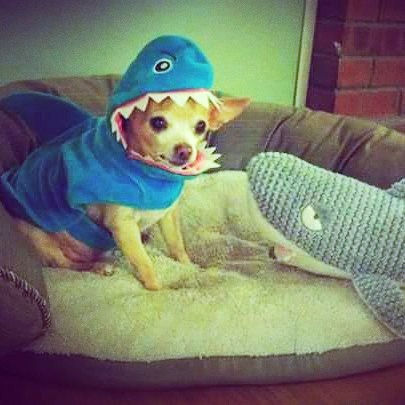Halloween and Dogs
- Allie Tellier, CCBS Executive Director

- Oct 30, 2023
- 3 min read
As October comes to a close, we celebrate Halloween and embark on a noisy week for our furry friends. According to the National Retail Foundation, last year, $9 billion was spent on Halloween-related products, and of that number, a staggering $480 million was dedicated to pets, from costumes to toys. Halloween is a pure celebration for people without the stress of gift-giving, as with other holidays here in the States.
Dressing up our pets with coats and occasionally with costumes has been documented as far back as the 1920s and beyond, as dogs became a status symbol of wealth for some living in homes. It's only in the past decade that we've seen a rise in pet costumes for Halloween. People find it "fun" to dress their furry companions up. As someone who analyzes canine body language for a living, I can tell you that it's not always enjoyable for the pet. Often, the pet has no say in the matter of wearing a costume and may not even want to wear a costume. No agency and no consent.
Pet insurance companies report that Halloween is the second most common holiday for pets to get lost, with July 4 taking first place. Pet insurance doesn't cover lost pets, but they do keep track of submitted claims. Constricting costumes can cause pets to panic, leading to choking or strangulation in some cases. In addition, pets may be exposed to toxic substances like chocolate and sugar-free gum (xylitol), resulting in treatment claims. Halloween can be a scary time for dogs, especially rescue dogs without a known history. There are knocks at the door and people dressed up in unsettling costumes. Some dogs are seemingly unfazed, and others not so much. Even those seemingly unfazed are affected on some level and you may simply not be aware. If you plan to engage in Halloween festivities at home or out in the neighborhood. Here are a few simple steps you can take to protect your pet's emotionality and physical safety this Halloween.
Keep human treats out of your dog's reach- chocolate and xylitol (found in sugar-free candy and gum) are toxic ingredients to dogs. They can accidentally eat one, or a child can accidentally give one to them.
Be careful of your door opening and your dog escaping. The extra door knocks and doorbells will cause even a calm dog to get excited. You could block access to the door, and if you cannot, then consider setting up your dog in another room away from the doorway activity.
Name tags are essential for dogs to wear at all times, especially during the holiday, in case they escape and get lost.
Keep costumes on humans, not dogs. It's important to remember that dogs should not wear costumes. Adding an unfamiliar item to wear can make dogs feel uncomfortable or even scared. At worst, it can cause them to panic. At best, it may cause irritations, overheating, or limit their ability to quickly move around.
With Halloween around the corner, it's easy to get caught up in the excitement, but it's essential to keep in mind that it's a holiday for people, not dogs. Take a step back and consider the experience from their unique sensory perception. The unfamiliar costumes worn by children and adults can be confusing for most dogs, and it often results in them becoming overexcited or distressed. If you plan to go out or attend a costume party, it's best to leave your pup at home in a safe and comfortable area with their favorite toy and some relaxing music. The same goes for giving out candy - if you plan to stay in, it's best to keep your dog in a place of the home where their stress and anxiety are minimized. As guardians, it is our responsibility to ensure the welfare of our dogs is protected, and by doing so, our dogs will love us forever for it!




How to Play Papa’s Freezeria
The gameplay of Papa’s Freezeria is simple yet addictive. It’s divided into four main stations, each with a unique purpose:
Order Station: Take orders and pay attention to each customer’s preferences.
Build Station: Pour the correct ice cream and add mixables as requested.
Mix Station: Blend the ice cream to the right consistency without overmixing.
Top Station: Carefully decorate each sundae with whipped cream, syrups, and toppings.
Every step affects your final score. Accuracy, timing, and presentation all matter greatly in Papa’s Freezeria. Fast service earns higher tips, while mistakes lead to unhappy customers. This balance between speed and precision is what makes the gameplay so engaging.
Well-organized and informative. Posts like this help readers get a clearer picture of what Juan365 Live offers.
I like how the author presented the information in a straightforward way. It made learning about VIP Juan365 feel effortless.
I like how the author kept the tone friendly while still being informative. It helped me understand Juan Bingo better.
Having access to well-organized information makes tasks easier to manage. Juan Bingo Withdrawal reflects how step-by-step explanations can reduce confusion and improve confidence.